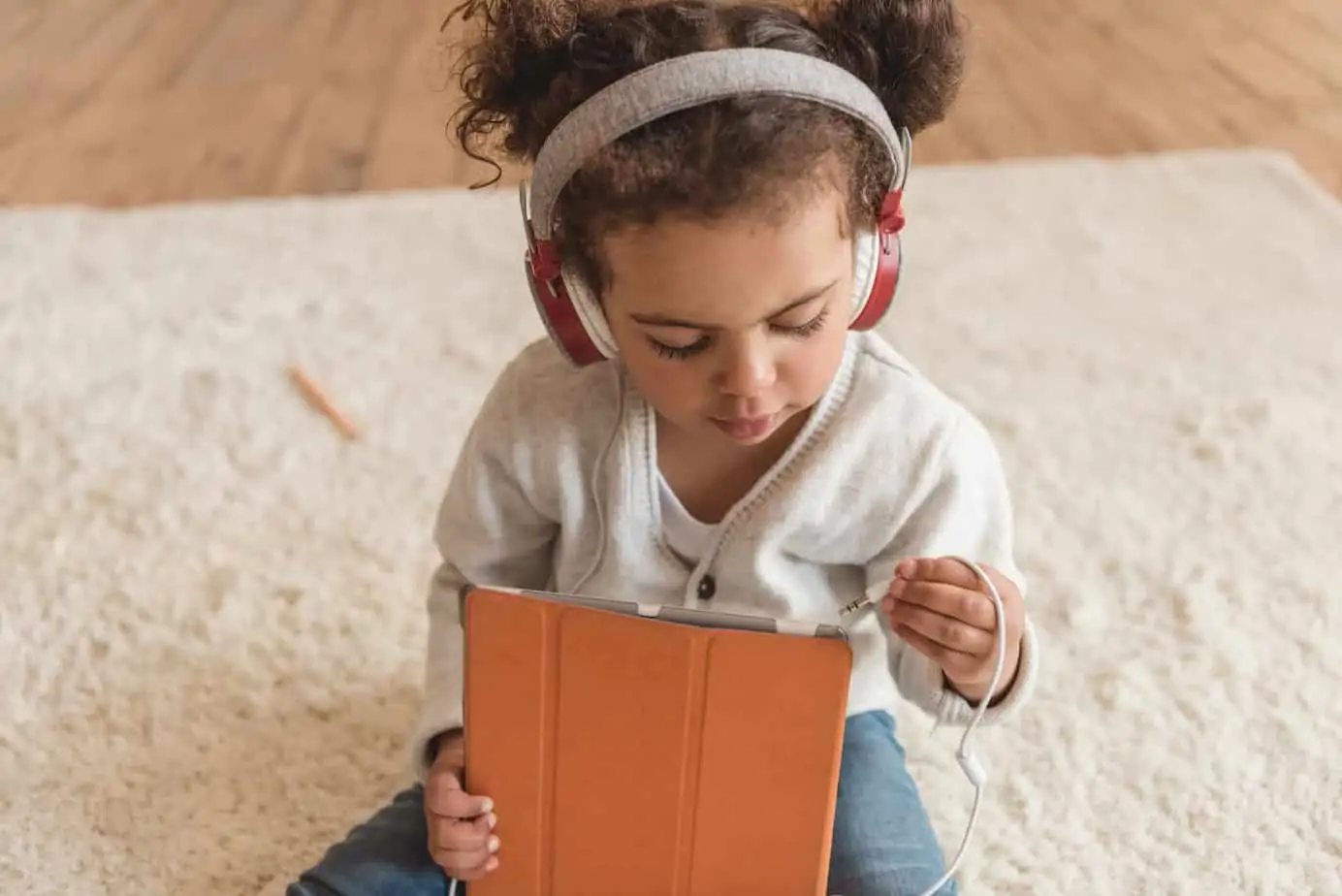Encouraging our kids to identify and express their feelings is not an easy task. Still, it is so important! These are the best books about feelings for kids to help them build emotional intelligence.
The Best Books about Feelings for Kids and Parents
It is difficult to introduce abstract concepts to children. Feelings aren’t tangible, so how do you get your kids to understand something they can’t see?
To help your children understand their emotions, you can use feeling books as important resources. They give children visual and verbal examples of feelings and how to recognize them. The best books about feelings for kids also teach children how to regulate these feelings and consequently build emotional intelligence.
I have some amazing resources to help you and your children better understand their emotions.
3 of the Best Feelings Books for Parents
Many kids have specific needs that go beyond the basic expression of their feelings. You can better understand how to best support your kids and their feelings with some of these books aimed at adults.
1. The Highly Sensitive Child by Elaine N. Aron PhD
Psychologist Elaine N. Aron provides parents with a guide on how to best support their highly sensitive children. These children are easily overwhelmed and often unfairly labeled as “problem kids.” They are also often misdiagnosed with disorders such as ADHD.
This book shares the challenges of raising highly sensitive children and gives you the tools to help your highly sensitive child thrive.
2. Helping Your Anxious Child by Ronald Rapee PhD
Most children fear something, but what happens when their worries become excessive? Anxiety can prevent children from fully enjoying their childhood and hold them back from various experiences. This book provides a practical guide on how to support and seek support for your anxious child.
3. Why Smart Kids Worry by Allison Edwards
This book is a practical resource for better understanding intelligent, anxious children. It can help you identify if your child is experiencing anxiety, explore the root of anxieties, and answer questions on how to help your children overcome them.
It includes workbook activities for you to do with your child to help them understand and overcome their worries.
The Best Books about Feelings for Kids
Books are such amazing resources for teaching kids about emotional regulation! They provide easy-to-understand metaphors, engaging illustrations, and important lessons. This guide includes kid-friendly books that teach kids how to express and recognize their long list of emotions.
1. The Feelings Book by Todd Parr
This classic is filled with quirky, colorful illustrations. It is the perfect balance of silly and informational. This book dives into the vast and varying emotions that kids experience every day. The examples range from heavy feelings of loneliness to whimsical thoughts of wanting to dance! This book is a fun and lighthearted tool to get kids to recognize their many emotions.
2. I am Peace by Susan Verde
Mindfulness is an invaluable tool in life. This introduces kids to the concept. Using empathy and being present, the book champions the healthy expression of emotions. Verde has several other books that pair perfectly with this one, such as I Am One, I am Human, and I Am Love.
As a bonus, this book includes a guided meditation that you and your children can use together.
3. What if, Pig? by Linzie Hunter
If your child is a worrier, this is the book for them. This book follows a pig that can’t stop its “what if?” spiral. In other words, this pig has some serious anxiety. The story is equal parts funny and sweet, showing that it is normal to worry, and when we do, we can always lean on our friends for help.
4. Ruby Finds a Worry by Tom Percival
This picture book acts as a springboard for teaching kids to talk about their feelings. It follows Ruby, a young girl who finds a worry that has taken on a physical form. Every day the worry gets bigger and bigger until it is too big to handle alone!
Ruby discovers that there is a simple way to get rid of her worry: she has to talk about her feelings.
This book encourages kids to talk about their anxieties and shows that everyone has worries.
5. In My Heart: A Book of Feelings by Jo Witek
In My Heart is a beautiful book that illustrates our feelings’ in many shapes and sizes. It uses an easily recognizable metaphor with a prominent heart cut-out. It encourages kids to look within and identify and express what they are feeling on the inside.
This lyrical tale describes the many feelings our hearts experience and gives them a tangible, expressible quality.
6. The Color Monster by Anna Llenas
The Color Monster is a great tool to promote emotional awareness. It follows a very confusing monster who wakes up one-day feeling a ton of emotions, all at once! A friend teaches him to associate different emotions with different colors to make sense of them.
This can be a good exercise that translates into real life. It gives kids simple language to express their emotions and encourages self-awareness.
7. The Way I Feel by Janan Cain
This book has withstood the test of time and is one of the most popular books about feelings for kids. It demonstrates a wide array of emotions without labeling them as good or bad. The vivid illustrations of close-up faces resonate with children. The emotions are clearly expressed and easily identifiable.
This book gives kids foundational information on how to identify what they’re feeling inside.
8. Sometimes I Feel Like a Fox by Danielle Daniel
Daniel introduces kids to the Anishinaabe tradition of totem animals. Through stunning illustrations, she shows children likening their feelings to animals, wearing the corresponding animal masks.
She demonstrates the importance of totem animals in her culture and how they can guide kids to understand themselves and others.
9. How Full is Your Bucket? For Kids by Tom Rath
This book provides a helpful metaphor for how different interactions affect us throughout our day. Simply put, when our bucket is full, we feel good, and when it is empty, we feel bad.
The metaphor gives kids language to describe how they’re feeling and recognize the events that may have led to these feelings. It also encourages kind action to help fill other people’s buckets.
10. The Invisible String by Patrice Karst
This book teaches kids about connections to loved ones. It is a common tool in helping kids understand loss, grief, and separation anxiety.
The invisible string connects you to your loved ones. Since it’s made of love, this string cannot be broken or lost.
This book can help children cope with and overcome loss by exploring questions about connection and love.
Frequently Asked Questions about Kids and Their Feelings
Exploring feelings is a major topic here on The Pragmatic Parent and below are some common questions about feelings. For more, check out the Emotion Picture Cards and quick-start online course Emotions A – Z: From Chaos to In Control.
When should I start talking to my kids about feelings?
It is never too early to start talking about feelings. The earlier you begin these conversations, the earlier kids will begin to gain emotional intelligence.
These conversations aren’t always easy! Not all of us were encouraged to talk about our feelings while growing up. Still, these conversations are important in allowing our children to feel safe, understood, and heard.
How can I encourage my kids to talk about their feelings?
Simply put…normalize it!
It can be hard for us to express our feelings at any age. We might not have the right vocabulary and be unsure of how we feel. We may just not feel like talking about it!
Encourage your kids to talk about their feelings by giving them the language to do so. Be verbal about your own feelings. Be inquisitive about your children’s emotions. Make emotions part of your daily conversation.
As a simple exercise, try talking about your rose and thorn of the day (a good and a bad event) and how they made you feel.
Are all emotions healthy?
We all experience a wide range of emotions, both good and bad. And while they can be difficult to feel, our negative emotions are just as valid and healthy to express as our positive ones. Encourage your kids to express their emotions as they come, even the uglier ones.
How can I teach emotional regulation?
While all emotions are healthy to express, there are some seriously unhealthy ways to express them! The best way to teach your children emotional regulation is to show them examples. Use this guide on books about feelings for kids to ground their experiences in relation to the stories
You can also encourage emotional regulation by modeling it. Children will emulate their parents in how they cope with their emotions. It all starts with you, the parents!
The Takeaway
Normalizing the act of talking about feelings is so important. Teaching our kids how to recognize, express, and regulate their emotions gives them lifelong tools to navigate and protect their mental health.
I hope you find these books a helpful jumping-off point for talking to your kids about their feelings.
Related Articles For Big Emotions
- Teaching Feelings & 6 Steps to Help Kids Express Their Emotions
- The Known (and Unknown) Signs Of Child Anxiety
- 7 Signs Your Child Needs a Mental Health Day to Recharge
- How to Meet the Core Emotional Needs of a Child
- How Can I Help My Child Deal with Strong Emotions?
- 5 Grounding Techniques for Kids with Anxiety & Big Worries
Want even more?
Shop All Parenting Resources
Shop all of our parenting resources from self-regulation tools and managing big emotions to building self esteem and confidence. There are resources for all seasons of life!








